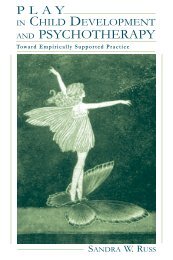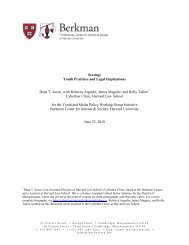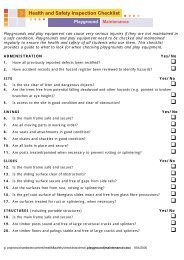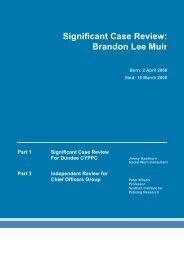Download PDF - Fair Play For Children
Download PDF - Fair Play For Children
Download PDF - Fair Play For Children
Create successful ePaper yourself
Turn your PDF publications into a flip-book with our unique Google optimized e-Paper software.
learning, where imprisoned parents and children have positive activities which they can do<br />
together, enabling parent and child to learn at the same time. <strong>Children</strong>’s Centres and schools<br />
can have a role in this by working with their local prisons to help improve the quality of these<br />
play schemes and child-centred visits, and the training of staff and volunteers.<br />
Young people<br />
2.38<br />
2.39<br />
2.40<br />
We want all young people to participate in positive activities in their leisure time, as we know<br />
this can make a significant difference to their life chances. Aiming High for Young People 20 set out<br />
a vision for improving places for young people to go. Along with the capital investment in<br />
facilities for younger children’s play, the <strong>Children</strong>’s Plan announced an additional £160 million of<br />
DCSF investment in youth facilities over the next two years, on top of the £60 million funding<br />
announced in Aiming High. The Youth Taskforce will ensure that £22.5 million of this investment<br />
is focused in 50 of the most deprived neighbourhoods. Our long term goal is to support all<br />
young people to participate in exciting, positive activities no matter what their background or<br />
income.<br />
<strong>Play</strong>-based activities can provide a route for younger children into youth provision, and a route<br />
for young people into more structured positive activities. All children and young people need a<br />
balance of structured and unstructured activities in their lives, and enjoy both. Aiming High set<br />
out strong evidence that all young people, particularly the most disadvantaged, benefit from<br />
taking part in activities that involve structure and close adult engagement. But we know that<br />
children also need the space and freedom to play on their own terms and that this is important<br />
for their development. We want to provide enjoyable opportunities for both structured and<br />
unstructured activities locally, and support children, young people, and parents in making<br />
positive choices about how children and young people spend their leisure time.<br />
The link between play and youth provision is therefore a key consideration for local authority<br />
strategies for improving local facilities for young people and for the preparation of their bids for<br />
capital funding.<br />
Case study – Islington<br />
In Islington, the play and youth services are integrated, and traditional youth work practice in<br />
delivering recorded and accredited outcomes for participants is being drawn down into<br />
playwork.<br />
<strong>For</strong> example, there is an Audit Commission target that 60 per cent of all young people using<br />
youth projects should achieve a recorded outcome. Islington use the same criteria for children<br />
using adventure playgrounds to achieve a recorded outcome which involves a clearly defined<br />
goal inspired by the child – such as a craft project, better interaction with other children or<br />
confidence to use a challenging piece of equipment – and a simple, subtle programme of<br />
work with the child to reach this goal.<br />
20 See www.dcsf.gov.uk/publications/tenyearyouthstrategy/<br />
<strong>Fair</strong> <strong>Play</strong>: A consultation on the play strategy<br />
23



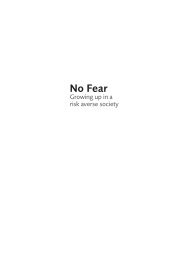
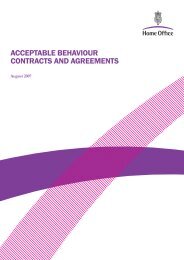
![The Childcare Act 2006 - Notes [Website] - Fair Play For Children](https://img.yumpu.com/50144819/1/184x260/the-childcare-act-2006-notes-website-fair-play-for-children.jpg?quality=85)




![Bouncy Castles [PDF] - Fair Play For Children](https://img.yumpu.com/45463572/1/184x260/bouncy-castles-pdf-fair-play-for-children.jpg?quality=85)

